The Last Judgment' by Michelangelo, 1536-1541.
Painted when Michelangelo was fully in his mature style, the artwork instantly made an impact and stirred controversy.
The artist came into the project after a long, successful period working for the Medici family in Florence.
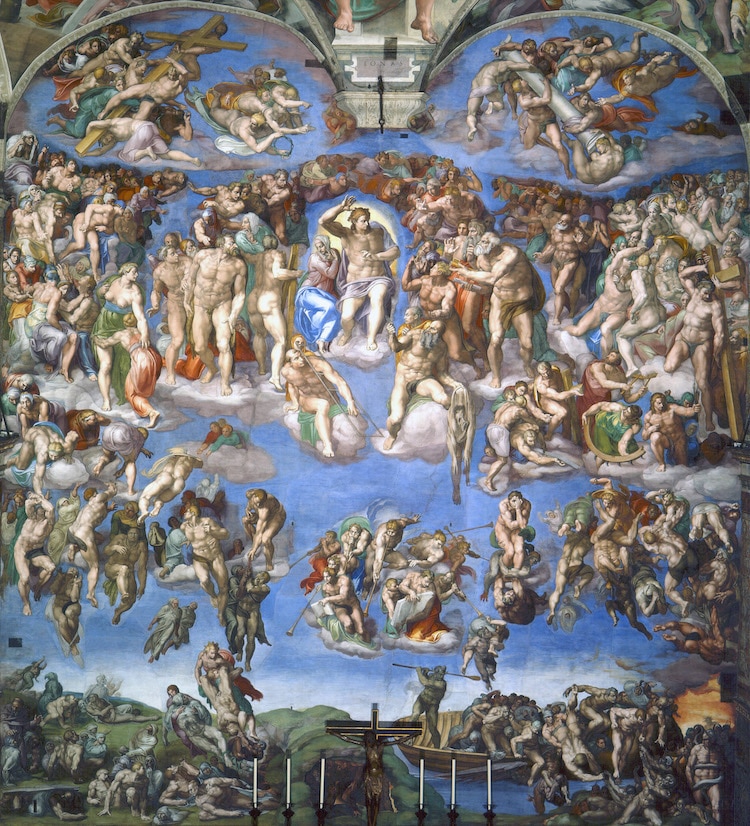
The Last Judgment' by Michelangelo, 1536-1541. (Photo: Public domain viaWikipedia)
Work began in 1534 and ended in 1541 when Michelangelo was 67 years old.
Michelangelos take on the subject has, over time, become iconic.
In the fresco, we see over 300 figures expertly painted to carry out this story.
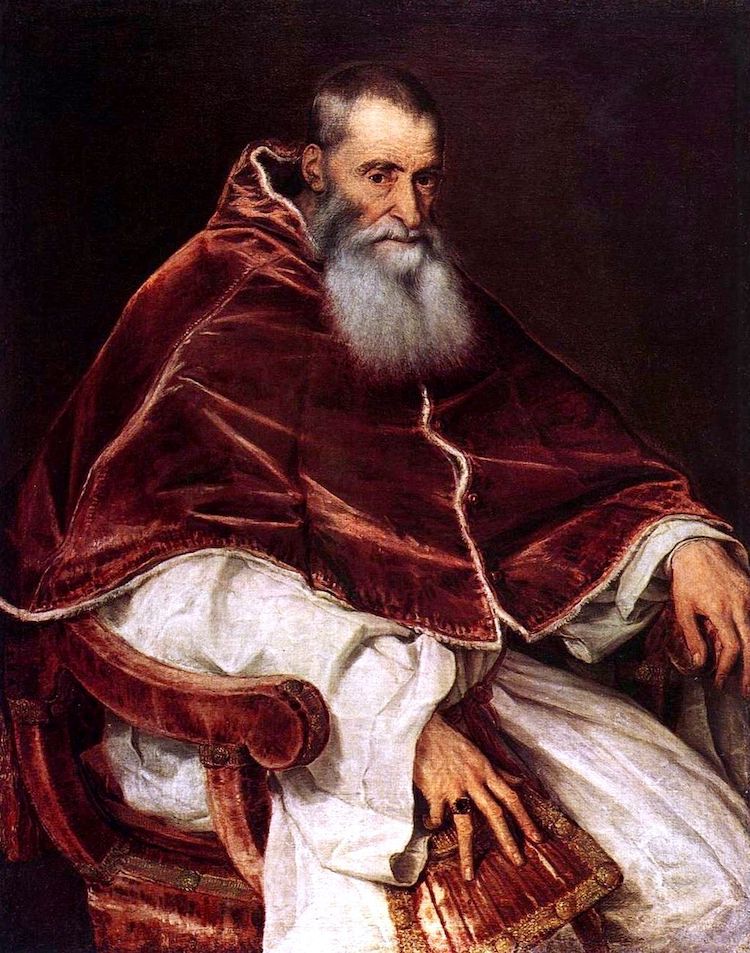
‘Portrait of Pope Paul III' by Titian, 1545. (Photo: Public domain viaWikipedia)
Ripplingly with muscles, this beardless Christ is an imposing figure.
His toned body and youthful appearance aren’t an accident.
Michelangelo would have looked to the ancient statues collected by the popes as a model.
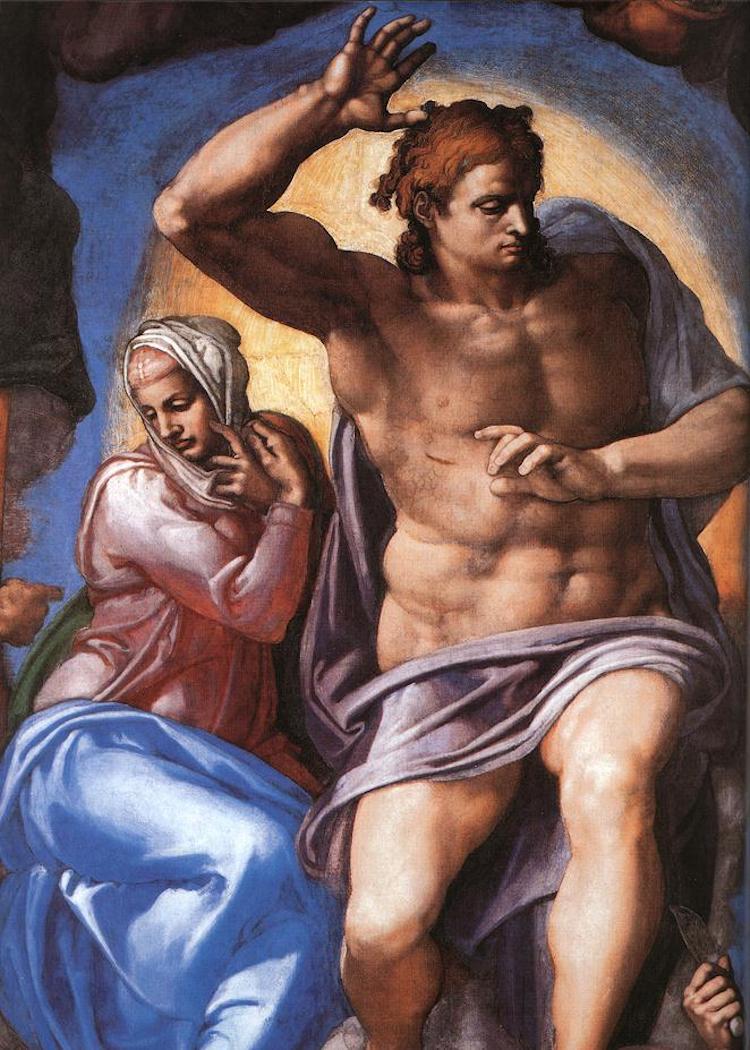
Christ and the Virgin Mary in ‘The Last Judgment' (Photo: Public domain viaWikipedia)
To his left sits the Virgin Mary.
Shes taken on a demure pose in contrapposto and looks toward those who have been saved.
Immediately surrounding this central pairing is a group of important saints.
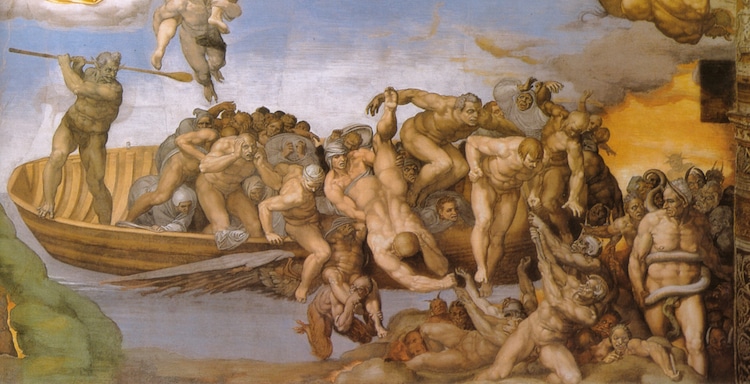
Charon and souls of the damned (Photo: Public domain viaWikipedia)
St. Peter, who holds the keys of Heaven, andSt.
John the Baptistare both shown on an equal scale to Christ.
At the bottom of the fresco, we seeCharon, a mythological figure.
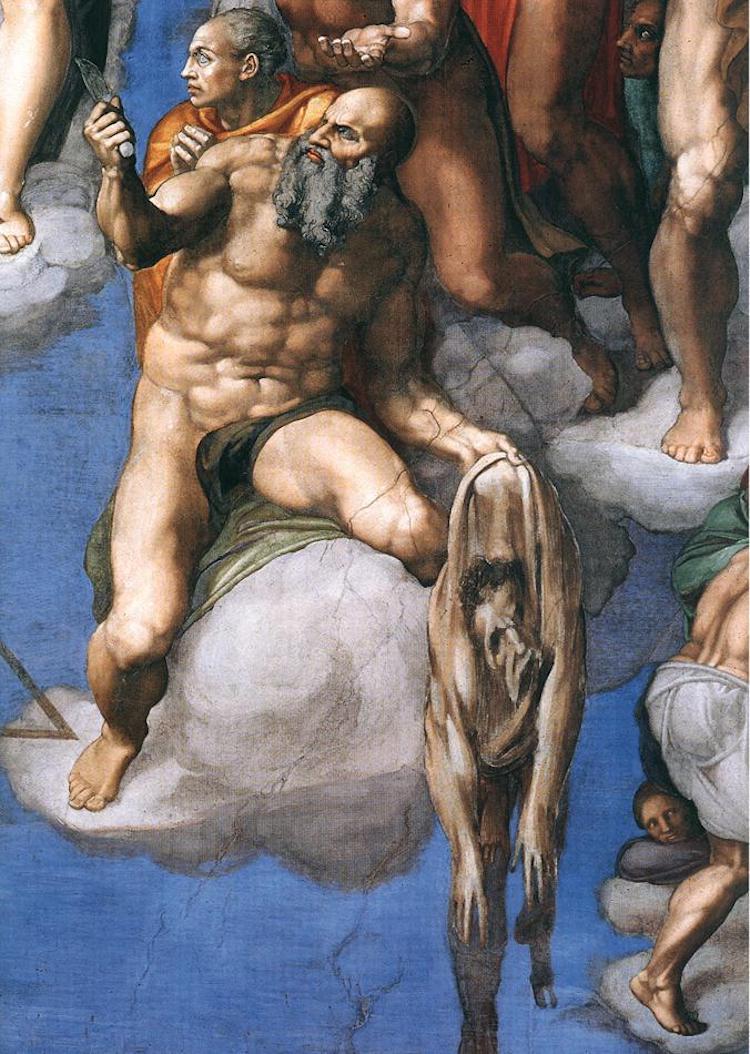
St. Bartholomew. (Photo: Public domain viaWikipedia)
In Greek and Roman, mythology he ferried souls to the underworld.
Here, hes carrying them straight to hell, which is filled with ghoulish characters.
Michelangelo’s inclusion of Charon and other mythological figures was inspired by Dante’sInferno.
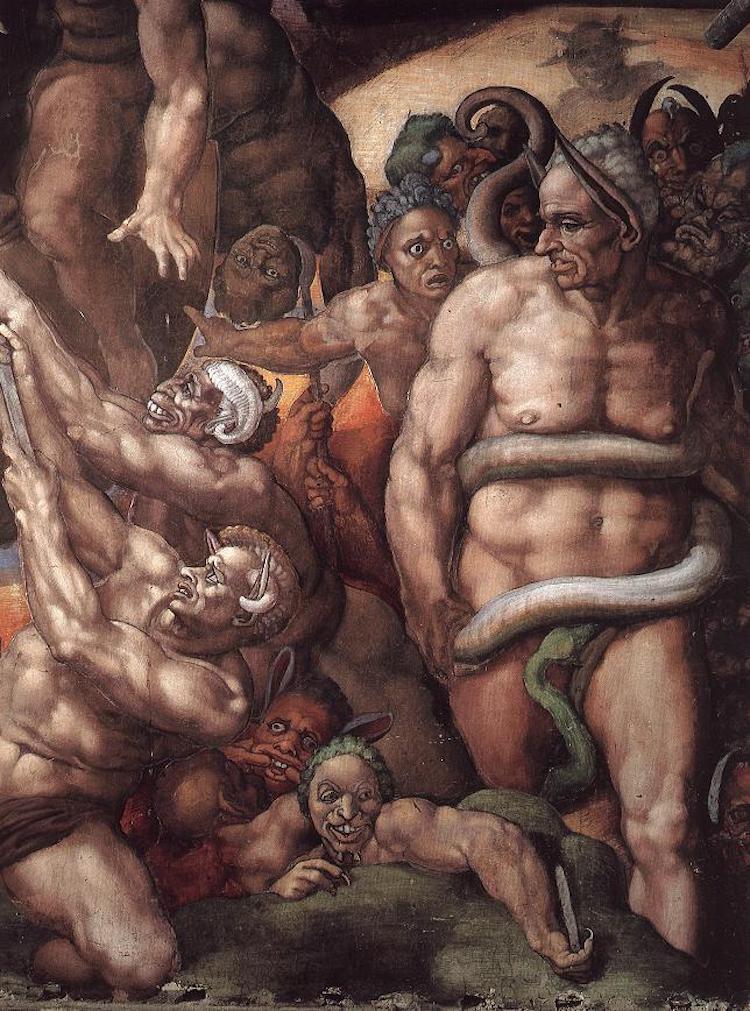
Biagio da Cesena as Minos in ‘The Last Judgment' (Photo: Public domain viaWikipedia)
The first is a rather gruesome self-portrait painted into the saint sitting just below Christs left foot.
He sits on a cloud with skin in his hand.
This isSaint Bartholomew, who was martyred after being skinned alive.
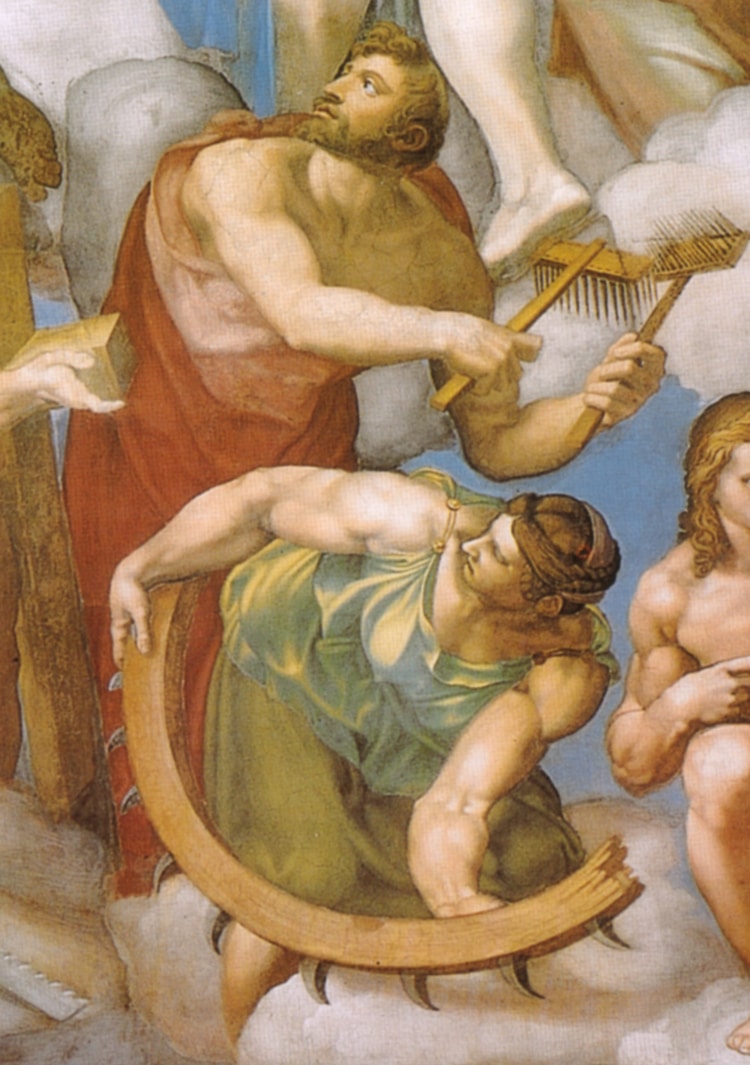
St. Catherine and St. Blaise after being repainted with clothes. (Photo:Wikipedia)
Therefore, hes not only holding the knife used to flay him but his own flesh, too.
Its widely believed that the face on the skin is actually a self-portrait of Michelangelo.
In the lower right corner of the fresco, a group of the damned stands clustered together.
Somehow, hed found himself placed into the fresco as this unflattering figure.
Many within the church were still reeling from theProtestant Reformationand trying to implement spiritual reforms.
Other critics felt that Michelangelo should have adhered more closely to the event as described in the Bible.
The controversy continued to grow in the years following the frescos completion.
This was only emphasized by the new reforms on religious art that theCouncil of Trentinstated in 1563.
In the official decree, anything superstitious or lascivious was to be avoided.
St. Catherine and St. Blaise after being repainted with clothes.
Each intervention was, unfortunately, more aggressive than the last.
In total, about 40 figures had drapery added and two figures were completely redone.
Luckily, since the modifications were done in dry fresco, they were easier to remove.
It was decided that the 16th-century modification should stay in place to help tell the history of the artwork.
Today, art critics have been kinder toThe Last Judgment.
Frequently Asked Questions
When wasThe Last Judgmentpainted?
Michelangelo paintedThe Last Judgmentfrom 1531 until 1541.
When wasThe Last Judgmentcensored?
Work probably began in 1564 and was carried out in stages.